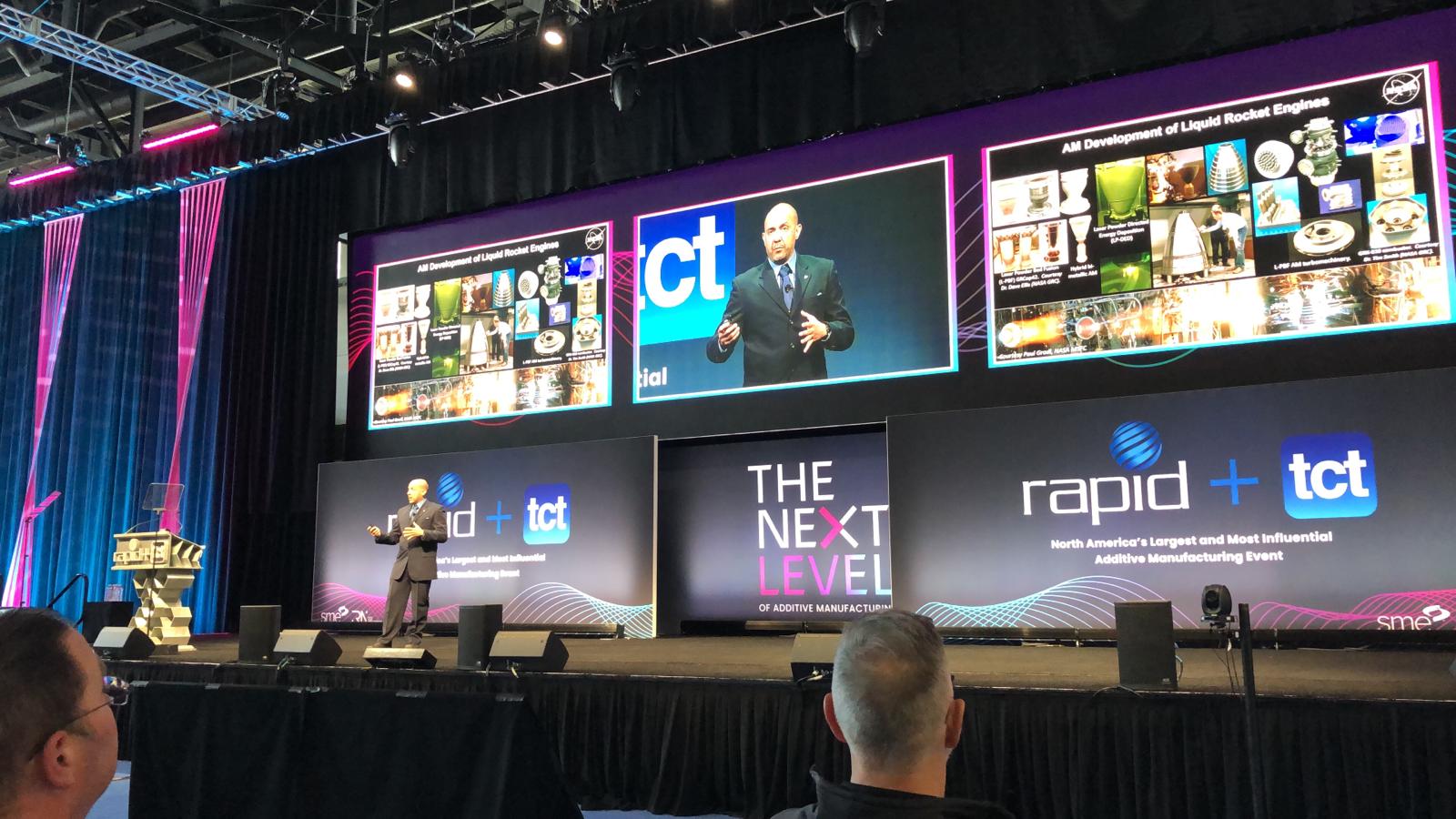RAPID + TCT is one of North America’s biggest trade shows and conferences for the additive manufacturing (AM) industry. This year, IDTechEx attended and spoke at the show; they interviewed prominent players and observed industry trends. While RAPID + TCT 2022 saw major technology and materials releases across the board from large and small players alike, RAPID + TCT 2023 felt more constrained in comparison. Still, the announcements and releases that did occur at RAPID 2023 consistently focused on enabling medium-to-high volume part production for AM’s power users. As the industry courts the users with the most potential to invest further in additive technology, here are some of the new releases that aim to accomplish that goal.
AM Hardware to Enable Higher Productivity
For the companies releasing new printers at RAPID, they shared a common theme: higher productivity. These printers were designed to increase end-user print productivity, whether it be higher speed, more power, or larger build volumes. For metal printers, Eplus3D released their EP-M400 powder bed fusion machine, which includes four lasers to increase speed and productivity. DMG Mori showcased the LASERTEC 30 SLM US, an American-manufactured PBF machine that features adaptive beam control to improve quality and throughput.
There were more prominent releases for polymer AM printers; Creality, Nexa3D, and Impossible Objects each showcased printers with improved speeds, with the last launching their CBAM 25 printer, a composite 3D printer utilizing sheet lamination that has print speeds 15 times that of comparable selective laser sintering machines per Impossible Objects. Others, like B9Creations, launched printers with bigger build volumes; B9’s new digital light processing (DLP) printer is their biggest yet.
Outside of the printers themselves, companies like PostProcess Technologies and HP highlighted their automated equipment that aims to streamline the entire manufacturing line for higher volume production. IDTechEx finds that improvements at every single point of the supply chain (pre-printing, printing, post-processing, quality control, etc.) will be critical to encouraging users’ continued adoption of 3D printers, which IDTechEx predicts will reach US$10 billion in market value by 2033.
Materials and Software for Higher Performing AM Parts
Beyond hardware, materials and software are other critical elements to a successful AM ecosystem. Software had its moment at RAPID; with Stratasys releasing the GradCAD Pro suite of software with numerous upgrades targeted for power users, BASF launching their lattice engine powered by Hyperganic, and AMFG and Dyndrite collaborating on an integrated software package for laser PBF printers. As users look to optimize AM operations, software presents opportunities to make AM more accessible and streamlined for different end sectors.
With IDTechEx predicting that AM materials alone will surpass US$31 billion in annual sales by 2033, that expected growth curve for AM materials will very much be fueled by the release and utilization of higher-performance materials that can go on to be used in more demanding applications, many examples of which were on display at RAPID. Numerous metal powders were launched or announced qualifications at RAPID, like Elementum3D’s aluminum 5000 series alloy, Mitsui’s chromium-copper alloy, and Uniformity Labs’ Inconel 625 alloy. High-performance photopolymer resins were also released, including Polyspectra’s new biocompatible COR Bio resin and a high-performance resin line developed by Nagase. Another interesting release was Jabil’s PLA (polylactic acid) powder that Natureworks developed. They are looking to bring the benefits of the most popular material in thermoplastic filament extrusion to the SLS market, an area dominated by nylon powders, per IDTechEx research.
Advancing the AM Ecosystem to Push the AM Industry Forward
IDTechEx’s interviews and discussions at RAPID + TCT 2023 made it clear that improvements were needed within the entire AM ecosystem to encourage more productive use of AM technology. Pushing towards these productive applications, where AM may be used as end-use parts, is not easy to accomplish, given the inherent limitations of many AM technologies and materials. But in the long-term, end-users will be more likely to invest in AM when they can see how its benefits will directly impact and improve their operations. An optimized AM ecosystem will be critical to convincing more end-users of AM’s value-add.
This article has been written by Sona Dadhania, Technology Analyst at IDTechEx.
Featured image: 3D ADEPT. Remember, you can post job opportunities in the AM Industry on 3D ADEPT Media free of charge or look for a job via our job board. Make sure to follow us on our social networks and subscribe to our weekly newsletter : Facebook, Twitter, LinkedIn & Instagram ! If you want to be featured in the next issue of our digital magazine or if you hear a story that needs to be heard, make sure to send it to contact@3dadept.com


